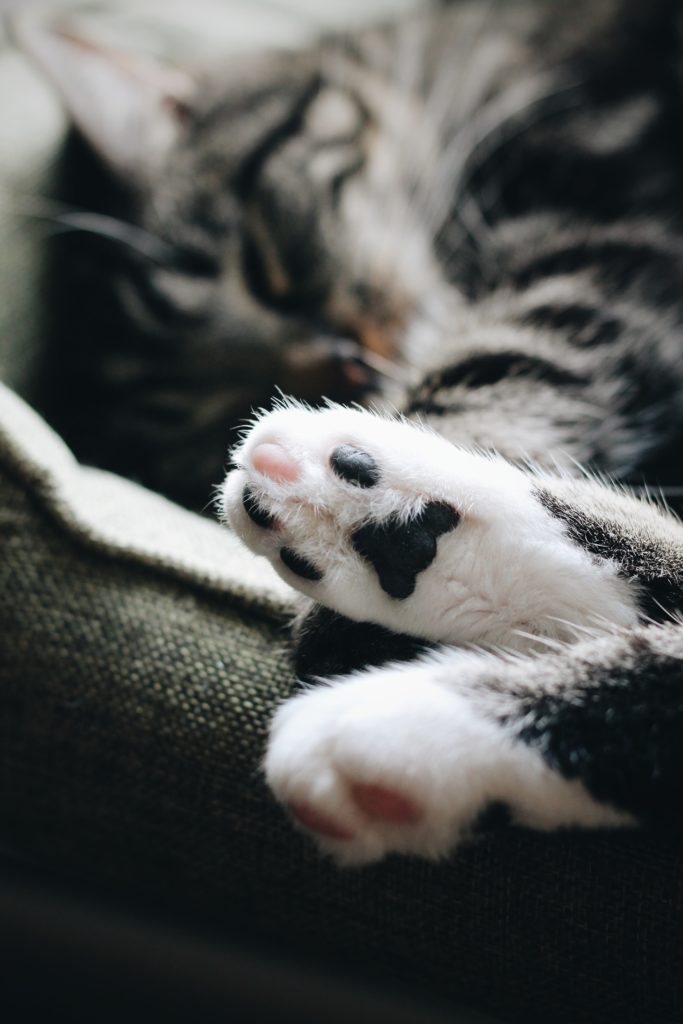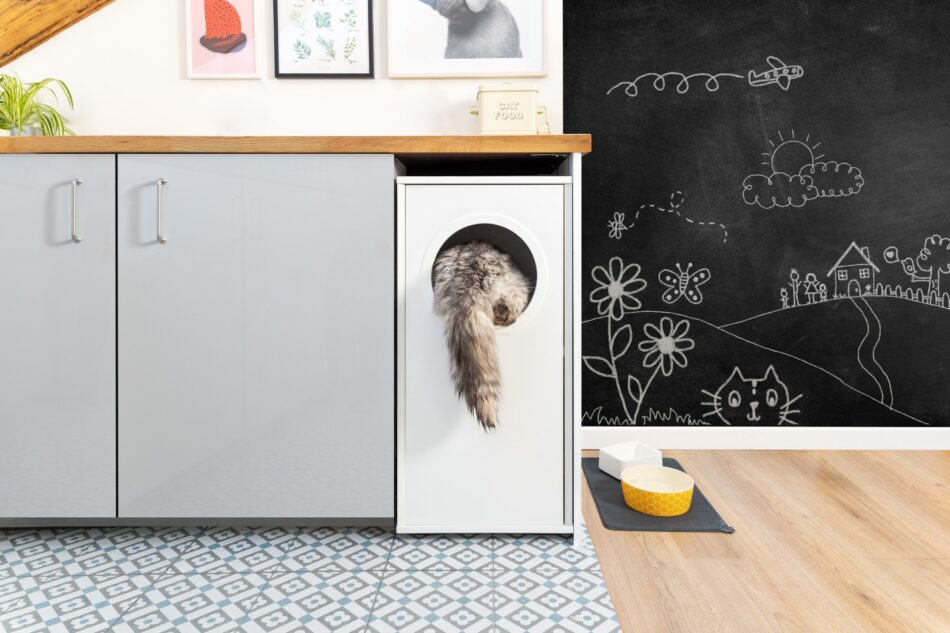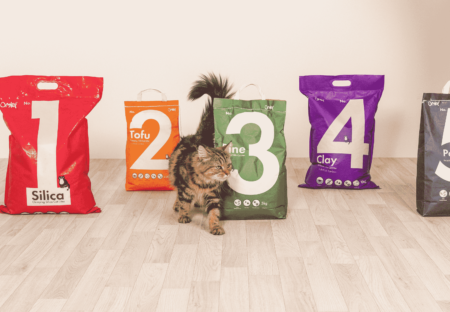
What is FIV?
FIV, or Feline Immunodeficiency Virus, is a viral infection that affects cats all over the world. It’s not in itself particularly dangerous, but steadily weakens the cat’s immune system, making them more susceptible to secondary infections.
FIV can be found in 2.5-5% of all cats worldwide, but is less common in healthy, domesticated cats like our pets.
How can my cat catch it?
FIV is spread through direct contact with an infected cat, most commonly through bites and wounds, which is why unneutered male cats prone to fighting for territory are over-represented among cases. Some evidence shows that mums can pass the infection onto their kittens, but it is rare. Infection through social grooming, sharing food and water bowls, and general close contact is very rare.
FIV can’t be transmitted between species, so infected cats can live with humans and other pets, but should be kept in a single cat household to be on the safe side.
How does it affect my cat and how do I spot it?

FIV starts with a short, normally relatively manageable illness that is not always noticed by the owner. After this the cats’ immune system will start to slowly deteriorate, but it can be years before it actually affects your cat in any way.
Something that will make a vet react and test for the infection is a cat that seems to struggle to recover from minor infections and illnesses. The cat doesn’t necessarily need to be very ill, it’s more a question of how often he or she needs to see the vet, or if they seem to be constantly battling some kind of health issue.
FIV positive cats are more susceptible to certain types of tumours, serious respiratory infections, skin diseases and mouth inflammations. That being said, research shows that infected cats have a similar life expectancy to healthy cats, and will in most cases be able to live a long and happy life if kept inside and looked after by a caring owner.
Can FIV be cured?
The simple answer is no, there is no cure for FIV, but as it’s secondary diseases and infections that mainly affect the cat, there are in most cases treatments, and there is no reason that a FIV positive cat won’t make a great pet for years to come.
A vaccine against FIV has been developed, but its efficiency has been questioned, and it’s currently only being used in some places in America.
What can I do if my cat is infected?
As FIV is spread through direct contact with other cats, it’s very important that infected cats are kept indoors. Not only does this stop the cat from passing on the disease to other felines, but also reduces the risks of catching secondary infections that due to their weakened immune system can make them very ill.
If you have a cat with confirmed FIV that can’t be let outside, they will still greatly benefit from some fresh air. The Omlet Outdoor Cat Run makes it possible for your cat to be outside and interact with the world around them, without the risk of running into any other cats. Decorate the run with some toys and a climbing post and let your cat play while you potter around the garden, or put a chair inside and take the opportunity to spend some quality time with your pet in the sunshine.
Other things you can do to help your cat is to take him or her for regular check ups, and to contact your vet as soon as you notice any changes, even if minor, in your cat’s health or behaviour. Also make sure to give a nutritious and well-balanced diet. Raw food diets are not recommended for FIV positive cats as uncooked meat and eggs can be dangerous to cats with a compromised immune system.
This entry was posted in Cats on August 24th, 2020 by linnearask

Most cats don’t need much persuading to use a litter tray. This makes training a straightforward process, and the key detail is the tray itself.
A litter tray needs to be large enough to accommodate your cat comfortably while it’s using the facilities. It also needs to be placed in a suitable spot. Cats feel vulnerable when they’re relieving themselves, and will not use a litter tray in a busy part of the house. A quiet corner is what they need – but it should be away from the feeding area, as cats, like humans, do not like their eating and toileting activities to be in the same space!
The cat litter itself is not usually an issue. All the available brands do the job. The advantage that shop-bought products have over plain sandy soil is that they are super-absorbent, and don’t stick to the cat’s feet. It is best to avoid perfumed or deodorizing litter, unless the additives are all natural. Chemical perfumes can cause allergic reactions in some cats.
Basic Litter Training
A young kitten with a weak bladder – or a stressed rescue cat – may take time to get the hang of litter trays, but it is rare for a cat to fail this basic training course!
- Make sure the tray is big enough. If in doubt, get the biggest one you can. This will accommodate the growing cat, and the tray will not seem ‘full’ after a couple of visits. If the cat thinks the litter is too soiled, it will not want to enter the tray.
- If your cat is particularly shy, a covered tray is the best option, as these give more sense of privacy.
- If you have more than one cat, it is recommended that you should have one tray per cat. This prevents problems if the pets fall out or decide they’re not going to poop where another cat has just pooped!

- Remove the solid waste from the tray each day, and thoroughly wash it – and replace the litter completely – at least once a week. If the tray starts to smell too unpleasant, the cat will be tempted to relieve itself elsewhere else.
- In the early days, timing is important. A kitten will usually need to relieve itself after playing and after eating. When a young kitten has finished eating, carry it to the litter tray. A few sniffs and a bit of litter-pawing will often stimulate the desired response. You can also play with your kitten next to the litter box, ready to lift her onto the tray when play has ended.
- Lead by example. Not by actually using the tray yourself, of course, but by pawing the litter with your finger. Don’t take the cat’s paw and force it to dig, though, as this can be stressful and may even lead to litter phobia, which is definitely not what you want.
- If accidents happen outside the litter tray, put the droppings in the tray as a prompt for the cat.
- Be patient, never shout at the cat if it’s taking a little time to get the hang of it, lavish praise and affection on a successful litter-visit, and once your pet knows what to do, just quietly leave her to it.
Litter Training Problems
If the cat is resistant to the idea of using the tray and continues to use other parts of the house as the toilet, one effective deterrent is to move the cat food bowl to the place where the accident happened. Cats do not like mixing and matching their food and toilet, so this should help her move on to the more appropriate facilities.
If the message is still not getting through, confining the cat to a spare room may do the trick. With the litter tray at one end and the food and water bowl at the other, it would be a very perverse cat indeed who did not get the message. It may sound a little like a prison, but as long as the room isn’t too hot or cold, the cat will feel secure. You can visit for playtimes too, of course, and the need for confinement will usually be over in a couple of days.
Cats that persistently refuse to use a litter tray may be stressed by something in their environment. This could be other cats, a dog, noisy children, or the simple fact that the tray is not in a suitable location. There are occasionally health-related issues that make a cat ‘miss’ the tray, too, so that’s worth checking out if you’re not making progress with the training.
Otherwise, litter training a cat is simplicity itself.
This entry was posted in Cats on August 24th, 2020 by linnearask



